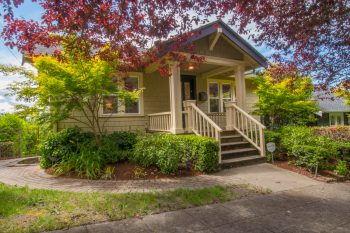There has been a lot of discussion about “affordable housing” lately, in the Greater Seattle/Western Washington area and really, the entire country. (OK, really in the last 5 or so years, after the market returned and surpassed bubble-bust prices). But what does “affordable” really mean?
Many people believe “affordable” is the same as “low-income” housing. Section 8, and other subsidized programs. Not the case, at all. Now, I’m not here to get political, but I do want to clear up some misconceptions. Affordable housing is a very complex issue. A couple of articles worth reading are here, here and here.
Affordable Housing, Defined.
The federal Department of Housing and Urban Development (HUD) defines an “affordable dwelling” as one that a household can obtain for 30 percent or less of its income. Of course, this number shifts by the particular area you live in. What’s considered affordable is going to vary wildly between the Seattle (which also varies by neighborhood), Mercer Island, and Bremerton markets, for example.
Check this out:
| Income | 30% income | “Affordable” Home Price | Monthly Payment | Location | Median Home Price |
| $50,000 | $15,000 | $260,000 | $1,250 | Bremerton | $299,000 |
| $75,000 | $22,500 | $400,000 | $1,875 | Poulsbo | $420,000 |
| $100,000 | $30,000 | $525,000 | $2,500 | Seattle – Queen Anne | $865,000 |
| $150,000 | $45,000 | $775,000 | $3,750 | Sammamish | $995,000 |
| $200,000 | $60,000 | $1,060,000 | $5,000 | Mercer Island | $1,525,000 |
Of course, these are general numbers for illustrative purposes. Monthly payment will depend on many factors. (I’ll gladly refer you to local lenders for more specific numbers for your circumstances). But you can see that what’s affordable in Bremerton isn’t far off of the median house price. Things look really different in Seattle, where even “affordable” is out of reach for say, and average teacher making around $50,000 per year. (See more income by ZIP code).
What’s the Answer?
Ultimately, the availability affordable housing isn’t just one issue to solve, much like the homelessness crisis gripping the Seattle area and many areas of the country. But one part of the approach has to be providing housing to more people, like our teachers, first-responders, baristas, and the administrative staff at your doctor’s office. (Access to better transportation issues, which would help with the massive traffic issues, is a topic for another day).
Some possible solutions are incentives to developers to create smaller homes, cities making code and zoning changes to allow more density (like Seattle is doing), and public/private partnerships to decrease the costs of development.
The First Step
By taking a minute to read this post, you’ve already taken a step toward helping–getting more informed. The more we are aware of the multiple facets of the affordable housing crisis, the better equipped we are to help solve it, however we can.

